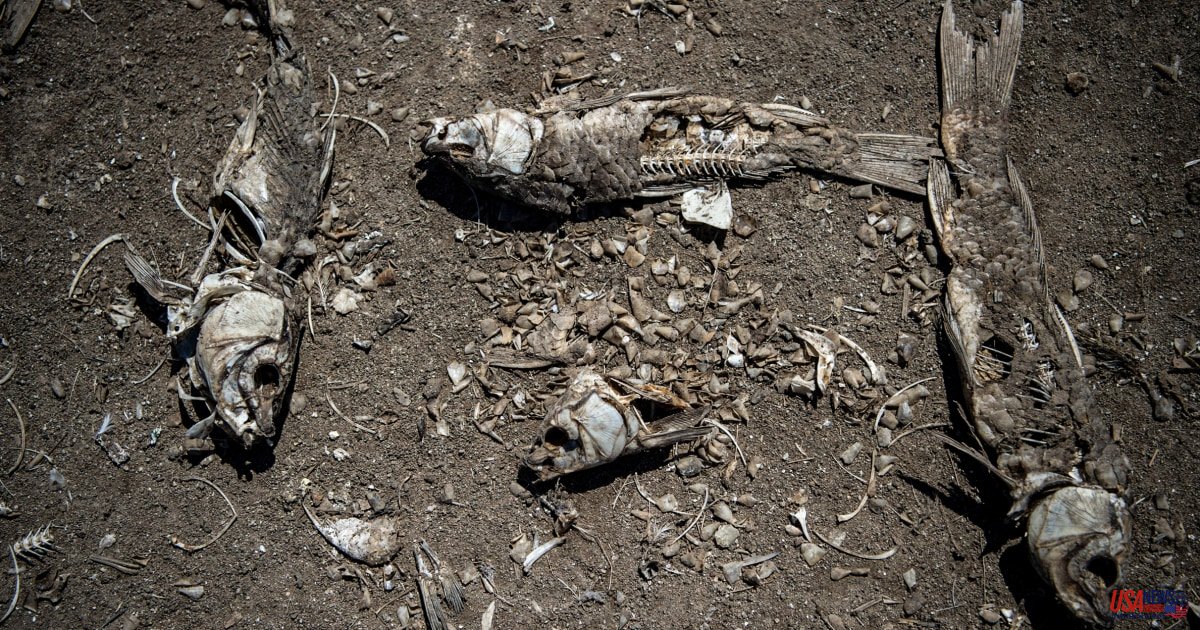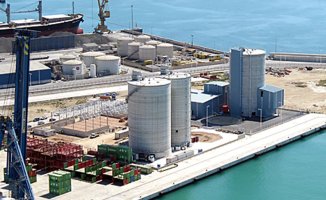PENUELAS (Chile) -- The Penuelas reservoir, located in central Chile, was the main water source for Valparaiso for twenty years. It holds enough water to supply 38,000 swimming pools of Olympic size. Only two pools have water left.
The lake's former lake bed has been covered in a vast expanse of cracked and dried earth. It is now littered with fish bones and animals desperate for water.
The country, which hugs the Pacific coast of South America, has seen its rainfall levels drop in recent years. This is despite a 13-year drought. The Andes snow, which was once a major source of spring and summer meltwater, has been melting faster than normal due to higher temperatures.
The drought that has hit the copper mines in the largest producer country in the world has sparked tensions about water use for farming and lithium. It also led capital Santiago to make unimaginable plans for possible water rationing.
Amanda Carrasco (54 years old) said, "We must beg God for water." She lives near Penuelas reservoir. Amanda recalls line fishing in the waters to catch local pejerrey fish. It's amazing. It's not like this.
The reservoir requires rainfall. It was once reliable in winter, but is now at historic lows. Jose Luis Murillo, general manger of ESVAL (the company that supplies Valparaiso water), said that the reservoir has to be flooded.
He said that "essentially what we have is just one puddle" and added that the city relies on rivers now. This is particularly significant when you consider that the Penuelas reservoir used to be the only water source for greater Valparaiso many decades ago.
Academic studies show that the problem is caused by a shift in climate patterns, which has been shown to be increasing the natural weather cycles.
Normally, low-pressure storms over the Pacific dump precipitation on Chile in winter. This recharges aquifers, and snowpacks the Andes Mountains.
According to a global study of rainfall deficits and sea temperature, the naturally occurring warming off Chile's coast has intensified storms' arrival. According to a study of variables that affect Antarctic weather, Ozone depletion, greenhouse gases, and the Antarctic both increase weather patterns that draw storms away form Chile.
An analysis of tree rings dating back to 400 years shows just how rare this drought is, according to Duncan Christie, a researcher at The Center for Climate and Resilience Chile. It is unrivaled in terms of intensity or duration.
He explained that this meant the Andes, which he called the country’s "water towers", were not getting the chance to replenish. This meant that there was less water available to fill rivers, reservoirs, and aquifers as snow melts in spring.
Miguel Lagos, a civil engineer, and water specialist, visited Laguna Negra station in central Chile to measure the snow cover. This was part of a process to estimate summer's water supply.
He told Reuters that there was nothing. "There was so little precipitation and such warm conditions that snow melted that winter."
Snow compacts and creates new layers which helps to keep it cooler for longer. Lagos stated that top layers of snow melt faster in warmer weather, and turn to vapor more quickly. This is called sublimation.
The International Journal of Climatology published a 2019 study that examined Chile's drought between 2010 and 2018. It found that shifting weather events could help ease future droughts, but it would all depend on how human emissions affect climate.
Segundo Aballay is a Montenegro-based animal breeder who prays for change.
He said, "If it doesn’t rain this year, we will have nothing to do." "The animals are becoming weaker and more vulnerable every day."
Unfortunately, for Aballay and other agricultural workers, the University of Chile has predicted that Chile will have 30% less water in the next 30 year. This prediction is based on historical data and mathematical models.
Lagos stated that "what we call drought today will become normal."
Francisco Martinez, a local campsite manager, recalled that hundreds of people came to Laguna de Aculeo to borrow kayaks and swim in the water.
In the barren landscape, rusty piers and old vessels still stand. A strange island rises above the dust on an area once covered by water.
Martinez said to Reuters that there is no water now, and it is a desert. "The animals are dying, and there is nothing here in the lagoon anymore."













